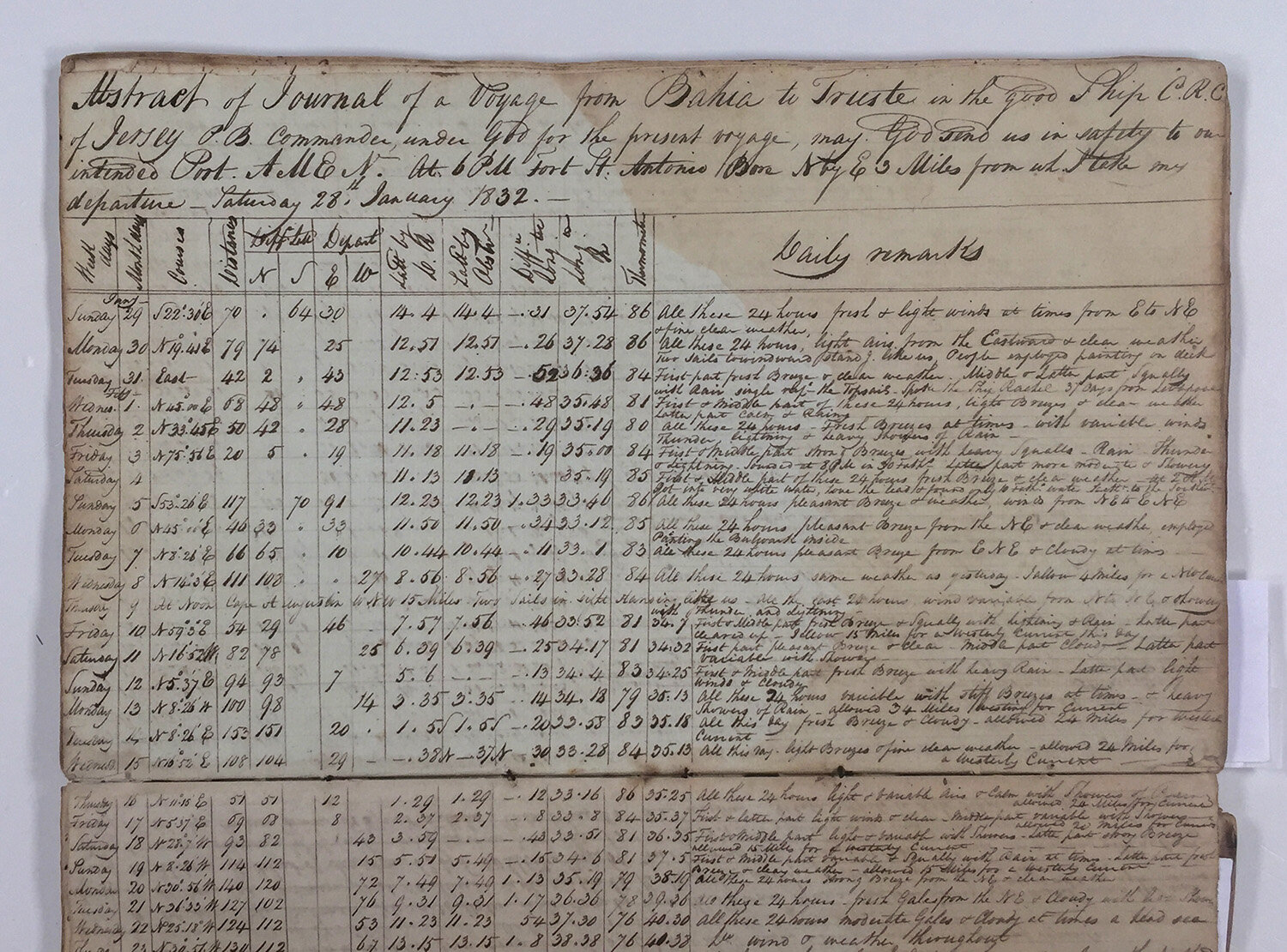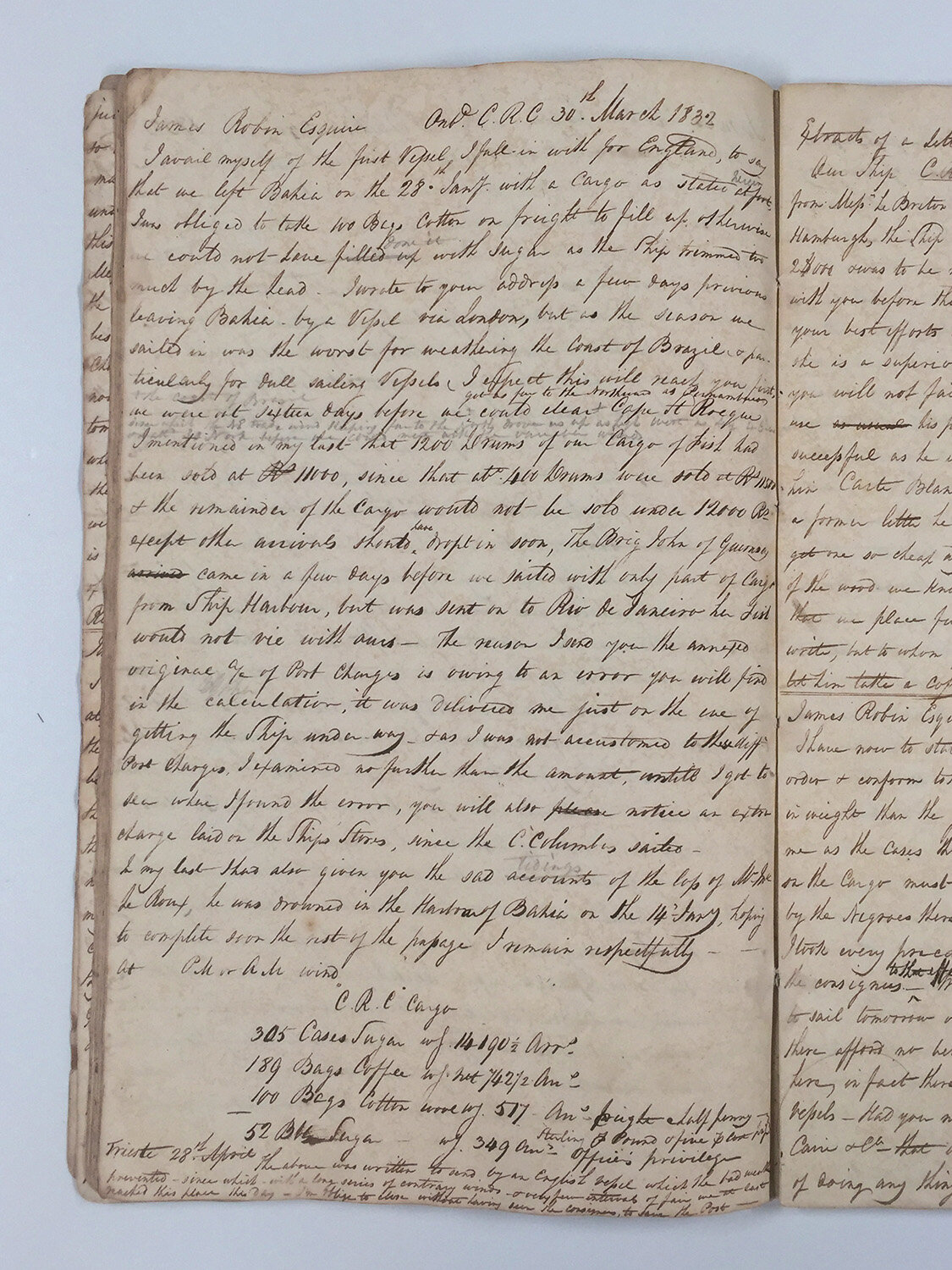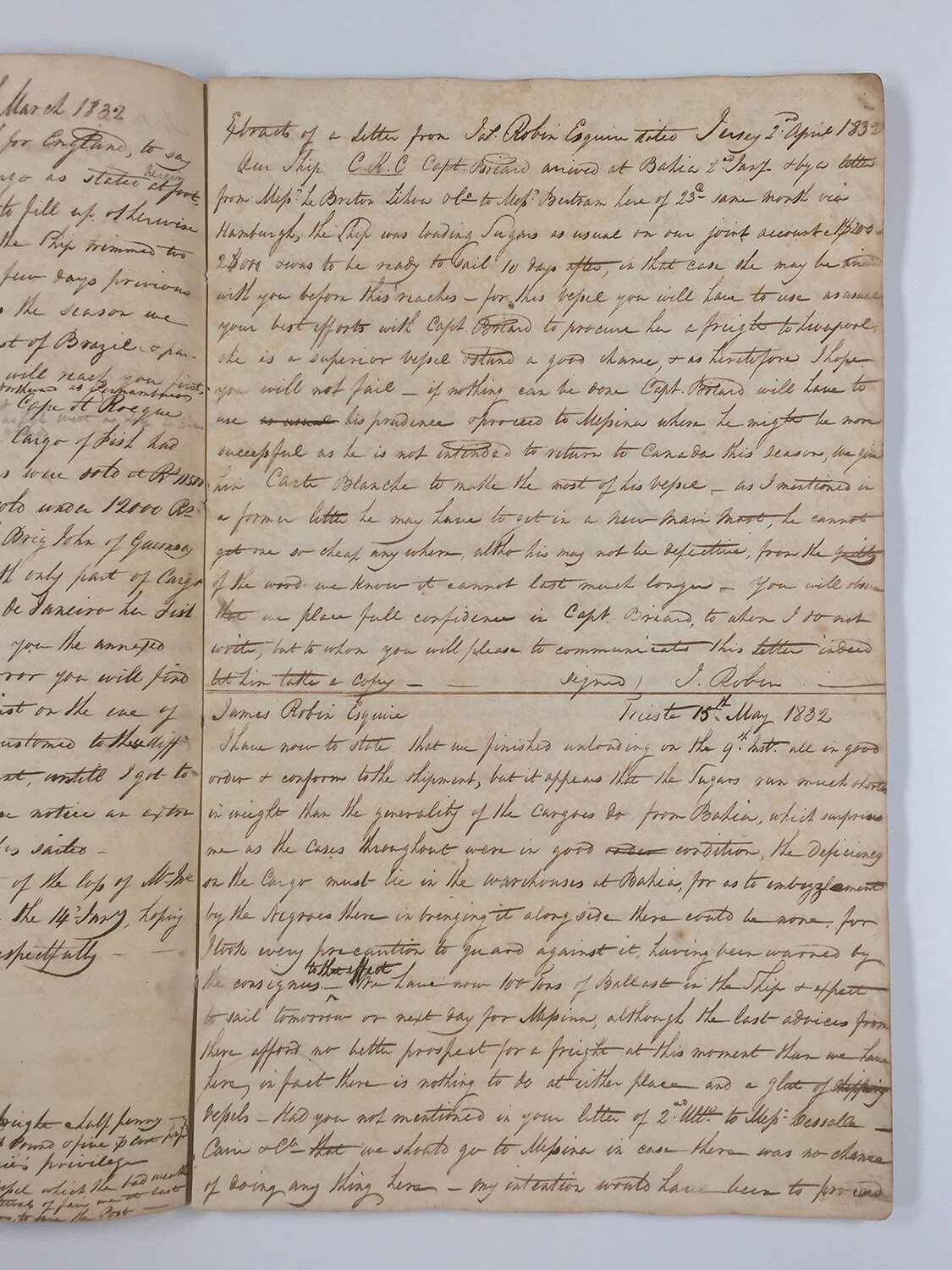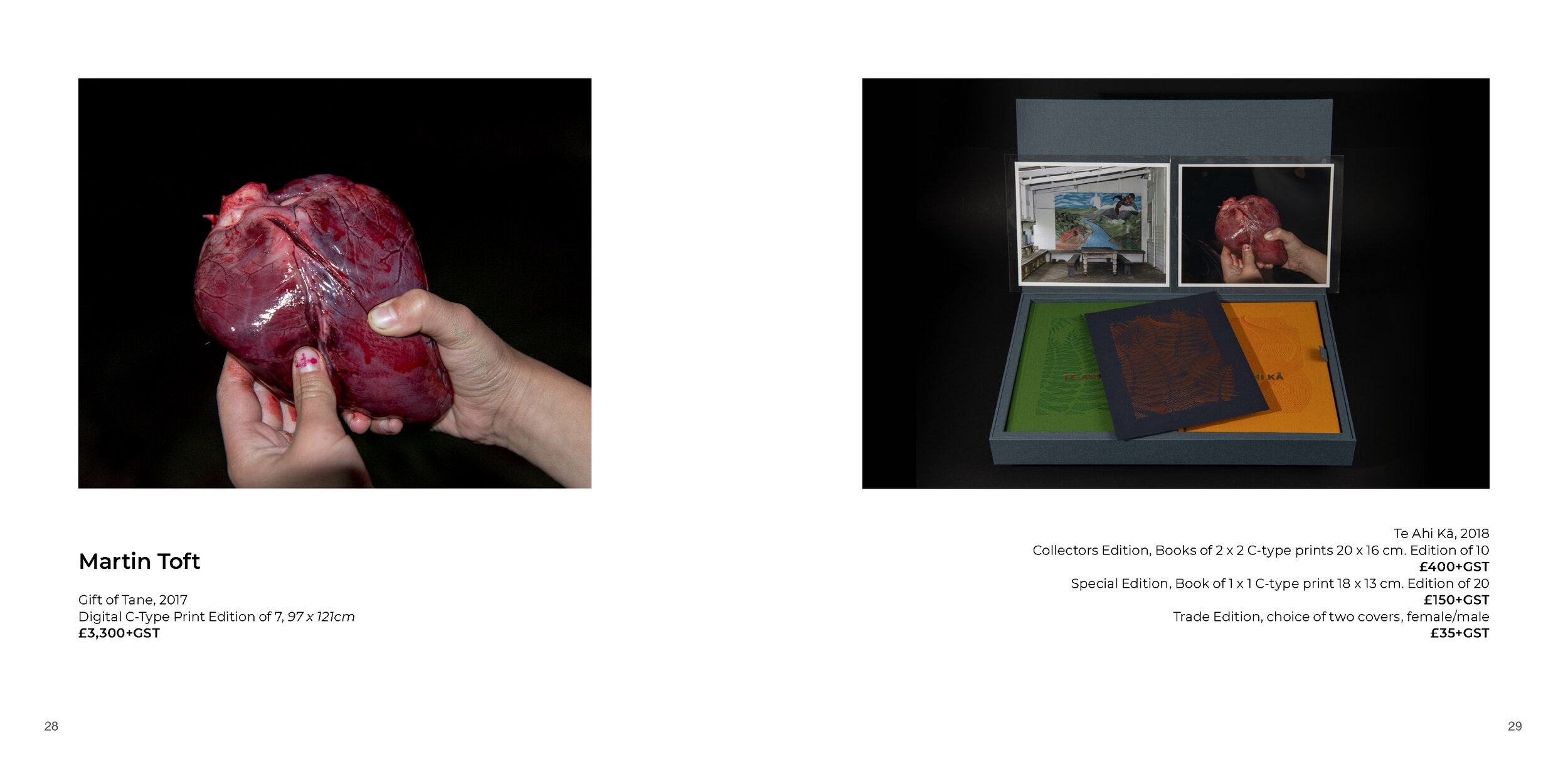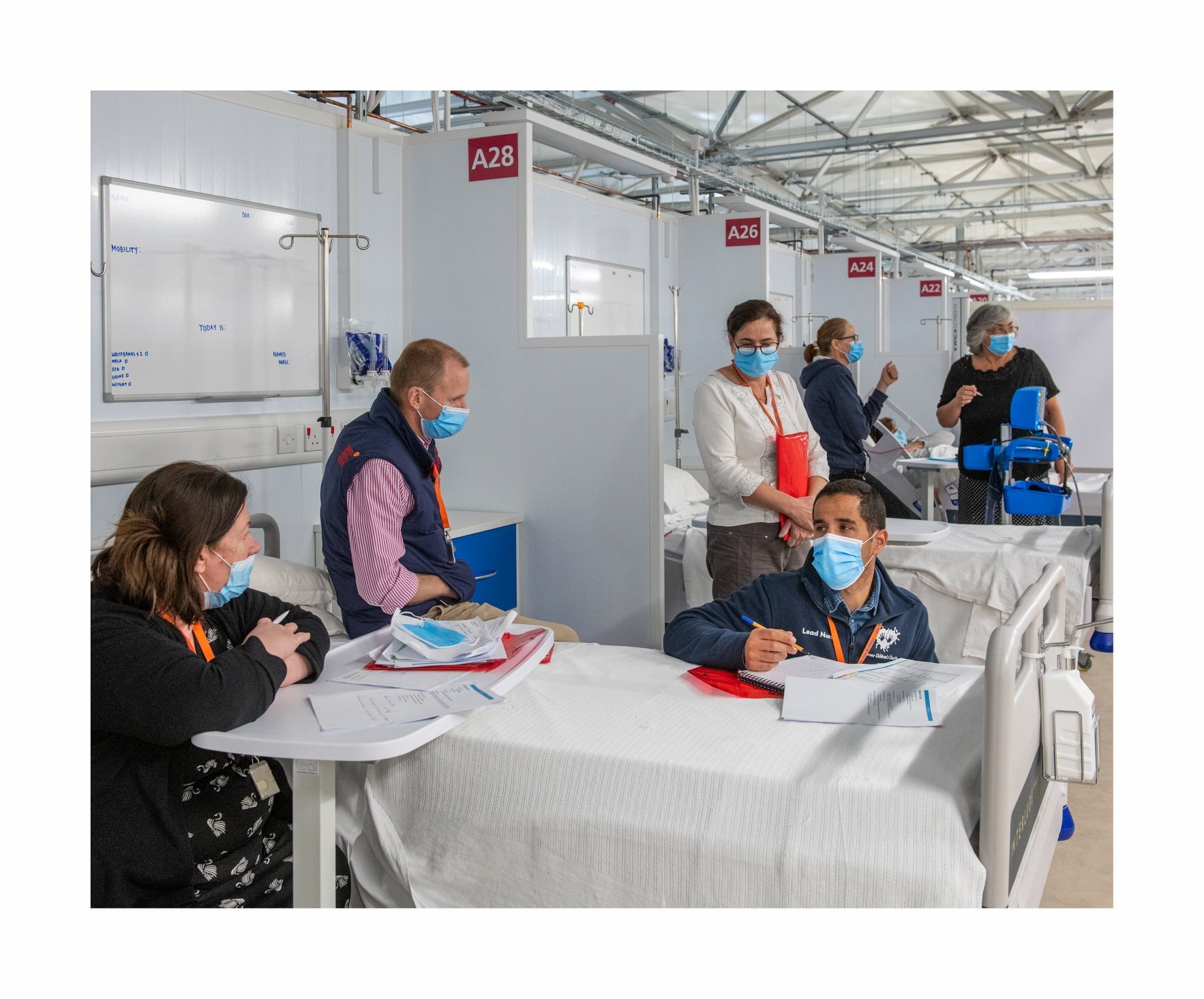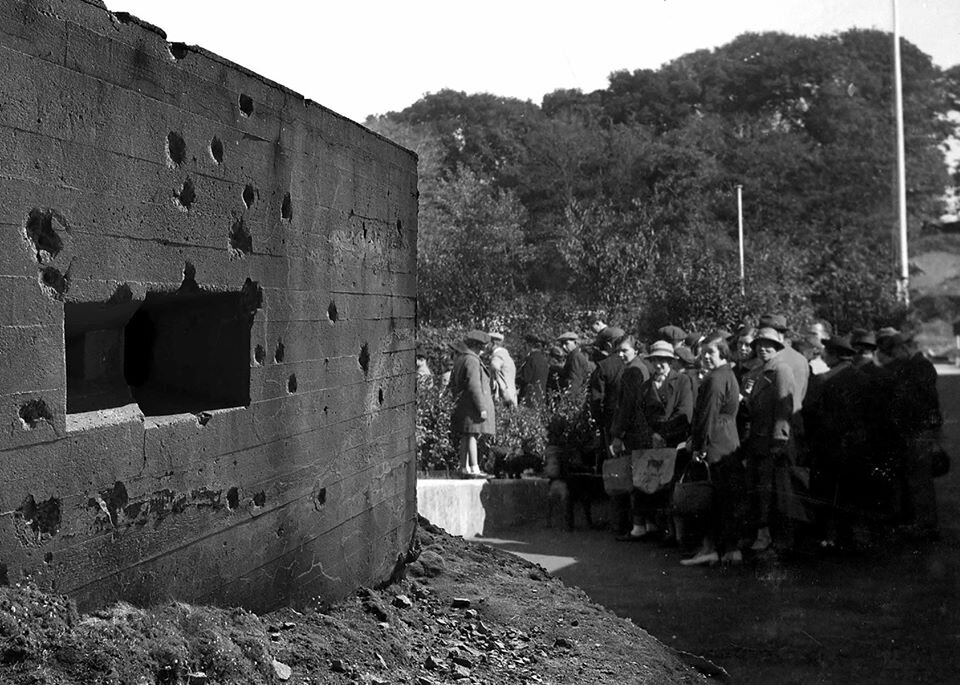Having just arrived in Rome after making a steadfast journey from Jersey stopping for a couple of days in the ports of Genoa and Livorno, I have an appointment at the Archivio centrale dello Stato (Central States Archives) to study merchant networks as part of ÊNTREPOT my longstanding photographic research project about Jersey’s maritime history and economy in the West Indies, South America and Mediterranean. Very little original research has been done in the outposts in the merchant triangle and we know from several literary sources and archival records that Italy was a major entrepot in the maritime network of Jersey cod-merchants engaged in the Atlantic trade.
Hidden in the archives of the Lord Coutance Library Société Jersiaise are the Briard Papers, which includes (amongst many other things) a Deck Log and Business Letters. Captain Peter Briard (senior) was employed by the Robin company of Jersey, the leading cod firm in Gaspe, Canada. He successfully mastered the Robin ships “Day”, “Oliver Blanchard”, “Christopher Columbus” and “C.R.C.” and Briard commanded the run from Gaspe to Naples or Palermo every year for nearly twenty years, starting in 1818 and continuing until the late 1830s. Naples was a central port, or rather the ‘central information point’ (Ommer 1990:217) where Robin would send ships to receive orders from Jersey with market decisions of where to trade its cargo.
After selling his codfish in Italy or Sicily, Briard loaded a cargo in the Mediterranean (eg. oranges and lemons from Palermo, shumac and brimstone from Messina, olive oil from Gallipoli, beans from Trieste) returning back to Jersey, or more often Liverpool, where the Robins had a merchant house and agent stationed as well. (Jamieson 1986:333). Looking through Peter Briard’s Deck Log we can follow the voyage pattern of the ship “C.R.C” more closely. For example, it left Paspebiac in the Bay of Chaleurs on Sunday 13 Nov, 1831 and arrived in Bahia (Brazil) on Sunday 2 January 1832. From here it sailed on 28 Jan to Trieste arriving three months later on 28 April. It then went to Messina on 22 May, Palermo 11 Sept before setting sail for Liverpool where it cast anchor on Sunday 28 October. (Briard, Deck Log 1818 – 1859.)
To understand better how the markets in Italy operated and why Robin sailed to different ports in the Mediterranean to trade goods from the colonies in the Americas we can gain an insight from reading Peter Briard’s Business Letters from 1825-1841. If we take the above voyages as entries we learn that markets were very volatile and collecting a new cargo on the return journey was not straight forward. The cargo on the ship “C.R.C.” from Paspebiac to Bahia was loaded with dried cod and left Brazil with a cargo of 305 cases of sugar, 189 bags of coffee and 100 bags of cotton. A couple of weeks after “C.R.C.”s arrival in Trieste, Captain Briard wrote a letter to James Robin Esq. on 15 May, 1832 to inform him ‘that they finished unloading the cargo on the 9th all in good order, but it appears that the sugars was much shorter in weight than the generality of the cargoes from Bahia, which surprises me as the cases throughout were in good condition.’ Briard carries on writing that ‘the deficiency of the cargo must lie in the workhouses at Bahia and the embezzlement by the Negroes there in bringing it alongside.’
Clearly, Briard are blaming the slaves in Brazil for his misfortune rather than taking responsibility as the captain of the ship that the cargo is correctly weighted and loaded. He continues: ‘we now have 100 lbs of Ballast in the ship & expect to sail tomorrow or the next day for Messina – although the last advices from there affords no better prospect for a freight at this moment (Briard, Business Letters, Trieste 15 May, 1832). A day after his arrival in Messina, Briard writes another letter to his employer to inform him that ‘the prospects from this place for a freight are equally as dull as I had been informed at Trieste & am now quite at a loss where to go to & what to do to find employment for the ship.’ (Briard, Business Letters, Messina 25 July 1832). In another example the “C.R.C”. ship left Paspebiac on 4 August 1840 with 4634.2 quantils of dried cod of superior quality for Naples, but upon arrival failed to find a suitable market and had been forced to move to Ancona (Ommer in Jamieson 1985: 262).
In the next 6 weeks I will be making my own journey around Italy re-imagining enterprising Jersey mariners befriending Latin cultures in entrepots on the Mediterranean and Adriatic seaports. This trip has been made possible with a grant from Millennium History Fellowship and support from Photo-Archive Societe-Jersiaise.
Buon viaggio!









